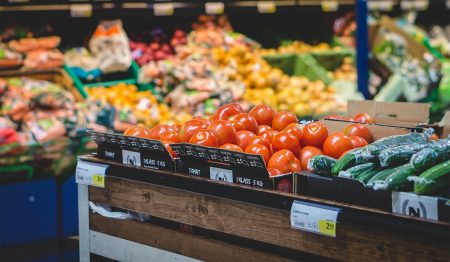
Digital Grocery: Unique Needs for a Unique Market
Over the last few years, customers have continued to embrace eCommerce at a breakneck pace. Originally, from a grocery perspective, products with long shelf lives seemed best suited for selling online. Customers, however, wanted to complete their entire grocery trip online, meaning businesses had to find ways to store and sell perishable items such as meats, produce, and more to satisfy customer demands.
Digital grocery sales have been gradually growing for years, and it is increasingly important for grocers to not just offer a full selection, but to meet customer demands around navigation, ordering, and delivery. Grocers have some unique requirements that make their eCommerce needs much different than a traditional retailer. Grocers also need to differentiate themselves with superior customer experiences on desktop, mobile, personalization, and service.
The Digital Grocery Shopping Journey
When a customer begins shopping for groceries online, it is important that the site can identify their location and direct them to their nearest store. Why? Different store locations can have differences in products, inventory, promotions and pricing.
From a logistics perspective, it is important to identify the customer’s location first so their shopping experience can be synced with the correct distribution center. This way, customers can see product inventory and know that the prices and sizing they are ordering are accurate and close by. Therefore, a digital grocery experience typically requires a more complex backend technology solution to handle these logistics considerations.
Knowing Your Customers
Grocery shopping is a very personal experience, which means that online grocery shopping requires robust customer data to build profiles. Most ecommerce solutions save preferred stores and favorite products, but online grocery shopping requires more features.
Grocery shoppers need the ability to filter products based on preferences such as organic foods or dietary restrictions. Communications with customers should be personalized so that they are based the customer’s local store and preferred products.
Delivery times must be much more precise when shopping for groceries online given the limited shelf life of some grocery items outside of the controlled environment of a grocery store or warehouse. Grocers need to have reliable delivery windows – hours, not days – and customers now expect same day delivery.
The interface for scheduling deliveries should be intuitive and designed for accessibility so that it can be used by customers with disabilities, adaptive strategies, and assistive technologies.
Versatility is a Must
Grocery orders are also unique because they often need to allow changes even after the order is placed. Changes in stock when it is time to pick grocery orders can require replacing, or removing, items from an order.
Customers also expect the ability to change their mind about an order at the last minute. A grocery solution needs to allow modification of already-placed orders and handle payment changes that many need to be applied after the order was first placed.
The order size of grocers also tends to be much larger than typical retail sites. The user interface needs to display orders that have many line items while having all order interactions perform quickly and consistently. The larger orders also need to be accounted for in back-end operations that take place on the site. Transferring orders between systems or performing batch processes on orders usually require more time and resources for grocers.
While there are some similarities between groceries and durable good shopping, there are differences in customer behavior and concerns which must be built into the customer-facing ecommerce site. The integration of customer orders through the delivery process also has unique challenges for the backend processing as it will have a significant impact on logistics.
